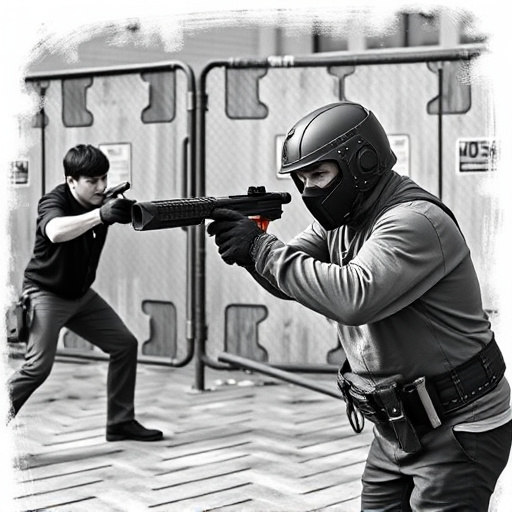The neuromuscular effects of stun devices, like tasers, are gaining attention in law enforcement and self-defense due to their ability to temporarily incapacitate targets by interfering with neural signals. Researchers are exploring the precise mechanisms behind these impacts, aiming to optimize device design and ensure safe usage. The effective range of these devices is crucial for tactical planning, with studies indicating an average practical range of 2-3 meters, reducible in wet conditions. Accurately assessing this range allows operators to maintain a safe distance while achieving desired neuromuscular effects on suspects.
“The neuromuscular effects of stun devices have sparked interest in understanding their impact on motor functions, especially considering the growing popularity of stun weapons as personal defense tools. This article delves into two key aspects: first, exploring the science behind neuromuscular disruption caused by stun devices and how it temporarily impairs physical capabilities. Second, we analyze the projectile range of these weapons, providing insights into their effective distance. By examining these factors, users can make informed decisions regarding self-defense strategies.”
- Understanding Neuromuscular Disruption: How Stun Devices Impair Motor Functions
- Projectile Range Analysis: Evaluating the Effective Distance of Stun Weapons
Understanding Neuromuscular Disruption: How Stun Devices Impair Motor Functions

Projectile Range Analysis: Evaluating the Effective Distance of Stun Weapons

The effective range of stun weapons, often referred to as stun guns or tasers, is a critical aspect to consider when evaluating their neuromuscular effects on targets. Projectile range analysis plays a significant role in understanding how far these devices can stun an individual and the impact this has on operational strategies. Stun weapons typically emit projectiles that utilize electrical energy to disrupt muscle control, leading to temporary incapacitation. The distance at which these neuromuscular effects take hold is essential information for law enforcement and military personnel.
Studies have shown that the range of a stun weapon can vary based on factors such as device design, ammunition type, and environmental conditions. On average, stun guns have a practical effective range of 2-3 meters (6-10 feet). However, this distance may be reduced in wet or slippery environments due to the risk of electrical discharge. Accurate assessment of projectile range is crucial for tactical planning, ensuring that operators can maintain safe distances while still delivering the intended neuromuscular effects on suspects or targets.
The neuromuscular disruption caused by stun devices and their corresponding projectile range capabilities highlight a crucial aspect of law enforcement and self-defense strategies. Understanding how these tools temporarily impair motor functions at varying distances is essential for effective deployment, ensuring public safety without causing permanent harm. The analysis of stun weapon ranges demonstrates the importance of tactical considerations, demonstrating that these devices can be game-changers in high-pressure situations, provided their use is meticulously controlled and targeted.
